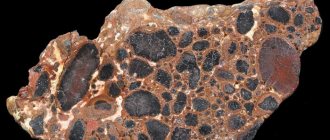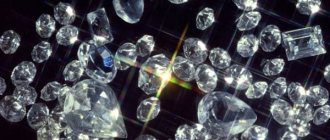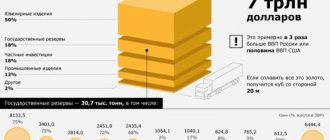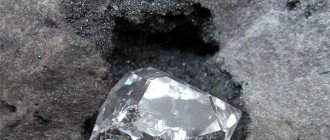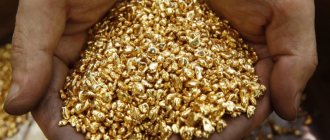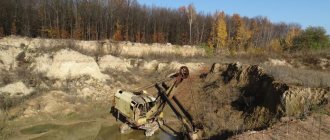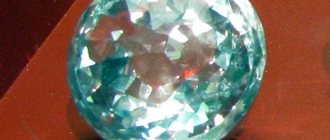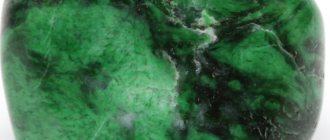Aluminum is an extremely light metal, but due to its characteristics, the raw material is used in many industries. It is used in aviation, shipbuilding, as well as the production of cars and ships. The use of aluminum became truly widespread during the Second World War.
To obtain the metal, bauxite is used, a resource whose extraction sources are found in 18 countries. As a rule, they are all characterized by a hot climate with sufficient moisture. In addition to bauxite itself, substitutes can also be used, but their use is less cost-effective. These include anorthosite, alunite, oil shale and other resources.
TOP 10 countries for bauxite mining in the world and why its extraction is so expensive
Moscow, 04/27/2021, 08:01:23, editorial office PRONEDRA.RU, author Inna Mordasova.
Aluminum is an extremely light metal, but due to its characteristics, the raw material is used in many industries. It is used in aviation, shipbuilding, as well as the production of cars and ships. The use of aluminum became truly widespread during the Second World War.
To obtain the metal, bauxite is used, a resource whose extraction sources are found in 18 countries. As a rule, they are all characterized by a hot climate with sufficient moisture. In addition to bauxite itself, substitutes can also be used, but their use is less cost-effective. These include anorthosite, alunite, oil shale and other resources.
Description and properties of bauxite
What are the visual characteristics of metal? Bauxite, in simple terms, is aluminum ore. It contains aluminum hydroxide, as well as oxides of other metals (iron, silicon and others). Bauxite contains not only the usual components, but also alumina. Moreover, this element is present in the ore in a ratio of 40 to 60 percent. In any case, the natural material is unique.
Before talking about the future of bauxite, we should return to its origins. You could first hear about the material in 1855, when it was presented at an exhibition in France. Onlookers were presented with an unusual silver-colored stone. It was clearly different from other previously discovered rocks.
The weight of the rock is very small, but from a chemical point of view the material is highly durable. It was immediately dubbed “clay silver” because of its color and softness. We will talk about the main properties of the material. In this case, the raw material used to extract aluminum was called bauxite. Not all rocks are suitable for making metal. Only those bauxites in which the percentage of aluminum chernozem reaches 40 percent or higher are suitable for it. Therefore, deposits where the material is produced with particular ease quickly find owners and are profitable.
Visually, “aluminum” ore is similar to clay. But there is nothing in common between these materials, based on their characteristics. If clay dissolves in water, bauxite retains its proportions. The Russian Federation also has reserves of raw materials. The first deposit, located in the Urals, was called “Little Red Riding Hood”. Today it is difficult to imagine entire industries if aluminum had not been invented.
TOP 10 countries for bauxite mining
The existence of metal deposits in the amount of about 30 billion tons has been proven. This amount of raw material for aluminum production should be enough for many centuries. Moreover, five countries have reserves of 70% of all bauxite.
Aluminum production requires a large amount of electricity. At the same time, bauxite is a transportable raw material, because it is mined in geographically remote countries. Consumers of the resource are developed countries with a huge energy base. It is not for nothing that most industrial enterprises operate near hydroelectric power stations. This makes it possible to reduce the territorial accessibility between mines for aluminum production and factories for its production. Among the leaders in aluminum production is Australia, whose annual share of production is 75 million tons. It is followed by China with 70 million, as well as Guinea with 50 million tons.
| N | A country | Production in 2004 (million tons) | Reserves at the end of 2004 (billion tons) | Share in world production (%) |
| 1 | Australia | 56 | 4,4 | 35,90 |
| 2 | Brazil | 18,5 | 1,9 | 11,86 |
| 3 | Guinea | 15,5 | 7,4 | 9,94 |
| 4 | China | 15 | 0,7 | 9,62 |
| 5 | Jamaica | 13,5 | 2 | 8,65 |
| 6 | India | 10 | 0,77 | 6,41 |
| 7 | Venezuela | 5,5 | 0,32 | 3,53 |
| 8 | Russia | 5 | 0,2 | 3,21 |
| 9 | Suriname | 4,2 | 0,58 | 2,69 |
| 10 | Greece | 2,4 | 0,6 | 1,54 |
| 11 | Guyana | 1,7 | 0,7 | 1,09 |
| Other countries | 9 | 3,72 | 5,77 | |
| Total worldwide | 156 | 23 | 100,00 | |
Bauxite deposits
According to modern data, the main reserves of bauxite (up to 90%) are located in 18 countries. The most important are:
- The country that ranks first in rock reserves (20 billion tons) is Guinea.
- Australia ranks second in the world (7 billion tons).
- Third place (6 billion tons) – Brazil.
- Fourth place (3 billion tons) – Vietnam.
- Fifth place (2.5 billion tons) – India and Indonesia.
Smaller volumes are mined in Jamaica, Mali, and Cameroon.
Bauxite mining is carried out in some regions of Russia:
- Arkhangelsk;
- Sverdlovsk;
- Belgorodskaya;
- Leningradskaya;
- Komi Republic.
But Russian reserves are minimal (250 million tons - about 1% of world production) and are imported. Some CIS countries also mine rock. Mining is carried out in Uzbekistan and Azerbaijan. But stocks are also minimal.
Watch a video about the deposit in the Komi Republic:
List of countries by bauxite mining
List of countries by bauxite mining
in 2007 based on data from the British Geological Survey.
| Position | A country | Bauxite (tons) |
| The whole world | 213,000,000 | |
| 1 | Australia | 62,428,000 |
| 2 | Brazil | 25,460,700 |
| 3 | India | 22,999,000 |
| 4 | China | 21,600,000 |
| 5 | Guinea | 18,519,010 |
| 6 | Indonesia | 16,000,000 |
| 7 | Jamaica | 14,567,738 |
| 8 | Russia | 6,053,900 |
| 9 | Suriname | 5,273,195 |
| 10 | Venezuela | 5,000,000 |
| 11 | Kazakhstan | 4,962,600 |
| 12 | Guyana | 2,248,928 |
| 13 | Greece | 2,220,000 |
| 14 | Sierra Leone | 1,169,036 |
| 15 | Ghana | 1,033,368 |
| 16 | Türkiye | 863,404 |
| 17 | Bosnia and Herzegovina | 800,546 |
| 18 | Montenegro | 667,053 |
| 19 | Hungary | 515,061 |
| 20 | Iran | 500,000 |
| 21 | France | 160,000 |
| 22 | Malaysia | 156,785 |
| 23 | USA | 128,742 |
| 24 | Vietnam | 80,000 |
| 25 | Pakistan | 18,082 |
| 26 | Mozambique | 11,800 |
| 27 | Tanzania | 5,003 |
History and origin of the stone
The history of the discovery of the rock begins in 1821. French geologist Pierre Berthier accidentally discovered an unusual rock while on vacation. The scientist has been engaged in mineralogical surveys and research for many years, so he decided to study the composition. Having found nothing surprising, he lost interest in the find.
But years later, the rock became famous and in demand. The first evidence of the demonstration of bauxite dates back to 1855, where a beautiful silvery specimen called "clay silver" was presented at a Paris exhibition.
The name is given in honor of the French locality of Les Beau, where the first samples were found.
Links
- British Geological Survey complete list
- Map of countries and bauxite deposits in the world at the end of the 20th century
| Country comparison lists | |
| Geography Demographics | Area · Maximum heights · Minimum heights · Population (1900 · 2011 · forecast) · Population density · Urban population: number of millionaire cities · Population growth · Fertility · Mortality · Infant mortality |
| Sociology | Life expectancy · Quality of life · Human potential · Education · Literacy · General happiness · Minimum wage · Income inequality · Intentional homicide · Suicide · Age of sexual consent · Adulthood · Prisoners · Charity · Consumption of: alcohol (beer) · cigarettes · coffee · mobile phones · Internet (high-speed) · cars |
| Entrepreneurship Economics | Ease of doing business · Innovation · Number of patents · Production and extraction of: oil · gas · coal · uranium · electricity · automobiles · iron ore · steel · cast iron · bauxite · copper · aluminum · zinc · manganese · bismuth · cement · cellulose · paper and cardboard · wheat · rye · rice · barley · buckwheat · corn · potatoes · milk · fish · wine · apples · Transport: railways · roads · pipelines · inland waterways · shipping · airports · metro |
| Macroeconomics | Global competitiveness · GDP (nominal): per person · GDP (PPP): per person, forecast · Budget · External debt · International reserves · Gold reserves · Oil reserves · Current account balance · Trade balance · Exports · Imports |
| Politics Army Space | Great Powers Economic Freedom Freedom of Speech Democracy State Failure Peaceful Armed Forces Military Budget Nuclear Club (nuclear weapons) Space Club (launch rockets) Satellites Astronauts |
| Sport | FIFA World Cup: men · women · ranking · Futsal · Ice Hockey World Cup: men · women · ranking · Bandy World Cup · Davis Cup |
Wikimedia Foundation. 2010.
Rock processing
Rock is mined in two main ways:
- open;
- underground.
Processing of high-quality rock is carried out chemically using the Bayer process:
- When crushed bauxite is treated with sodium hydroxide, sodium aluminate is formed.
- The resulting compound in liquid form is purified from unnecessary impurities.
- Then aluminum hydroxide (alumina) is precipitated from it.
Low-quality crushed rocks are processed in another way (electrolysis):
- The crushed raw materials are combined with soda and limestone.
- Sent to a special rotary kiln.
- The workpiece removed from the furnace is treated with alkali. A chemical reaction occurs with the precipitation of hydroxide.
- The hydroxide is separated and then filtered.
The designation of bauxite on the map looks like a black square with an inscribed white circle. This is how all types of aluminum ore are designated.
Video review on the topic of aluminum mining and processing:
Properties and applications of bauxite
The main direction of use is the production of pure aluminum from bauxite and its salts. Minor areas:
- production of flux - a group of substances that remove oxides from surfaces intended for soldering;
- paint and varnish production;
- during oil refining as a sorbent;
- production of aluminous cement used in construction at low temperatures;
- creation of electrocorundum - a fireproof, resistant superhard material used as an abrasive substance.
What is important to know about the economy of Guinea, where the coup took place
Public finance
Guinea has a budget deficit of 3.1% of GDP in 2021 (data from the African Development Bank Group), which had to be partially financed through short-term loans from the national central bank. In addition, last year the republic mobilized external financial assistance to combat the COVID pandemic in the amount of $381 million, or 2.5% of GDP (grants and loans from the IMF, World Bank, African Development Bank, Islamic Development Bank - 85% of the population of Guinea professes Islam).
Read on RBC Pro
Why do we put off life until later and how to get out of this dead end
“I demand 20 salaries”: when companies are forced to pay a “golden” parachute
What will the ruble exchange rate be in 2022? Forecasts depending on oil prices
Has a bubble formed in the gas market and when can it burst?
Guinea's debt position is assessed by international institutions as stable, with a “moderate” risk of an external debt crisis. Guinea's total public debt at the end of 2021 increased to 44% of GDP compared to 36.5% a year earlier. However, the country has a very large current account deficit - 13.3% of GDP last year. This is primarily due to the significant volume of imports of fixed assets for the implementation of large mining and infrastructure projects, as well as the import of transport and telecommunications services.
Video
Bauxite mining
Mining accounts for about 25% of Guinea's GDP and is the fastest growing sector. The country is the world's second largest bauxite producer after Australia (88 million tonnes last year, according to the local Ministry of Mines and Geology). Bauxite reserves in Guinea are estimated at 7.4 billion tons. According to billionaire Oleg Deripaska, 20% of global aluminum production uses bauxite from Guinea.
Aluminum does not occur in nature in its pure form. The main ore for its production is bauxite (aluminum-containing ore), which is processed into alumina (aluminum oxide), and metal is already obtained from it by electrolysis. About 20% of global aluminum consumption comes from the automotive industry.
The largest bauxite producer in Guinea is Société Minière de Boké (SMB), founded in 2014 and representing, among other things, Chinese interests (it is controlled by a consortium that includes Singapore-based Winning Shipping, Chinese aluminum producer Shandong Weiqiao and the Guinean government). China is the main export destination for Guinean bauxite: since the beginning of 2021, China has accounted for about 55% of supplies, according to S&P Global Platts.
Bauxite mining in Guinea is also carried out by the Russian group Rusal and Emirates Global Aluminum (UAE).
The leader of Guinea's putschists, Colonel Mamadi Doumbouya, said on Monday, September 6, that the country will continue to respect its international business obligations. “Economic and financial partners can be confident that economic transactions in the country continue as usual,” he stressed.
Gold and other metals
Guinea exported 892 thousand troy ounces of gold worth $1.2 billion in 2021, according to data from the US International Trade Administration. In 2021, gold production in Guinea amounted to 56.9 tons (or 1.83 million troy ounces), according to the World Gold Council, more than doubling compared to 2019.
In Guinea, gold, in particular, is developed by the international company AngloGold Ashanti (Siguiri mine, which produced 117 thousand ounces in the first half of 2021). Nordgold also owns the Lefa gold mine in Guinea (the main beneficiary is the family of Alexei Mordashov). The company, according to its own data, has invested $1 billion in it since 2010. “To date, the political situation in Guinea has not impacted Nordgold and our Lefa gold mine continues to operate as normal,” the company said on September 6.
Guinea is also implementing a large-scale Simandou iron ore mining project, which is financed, among other things, by the Australian Rio Tinto Group and the Chinese China Baowu Steel Group. However, this project is being delayed and has not yet even reached the feasibility study stage. The coup in Guinea could delay it further, says S&P Global Platts.
